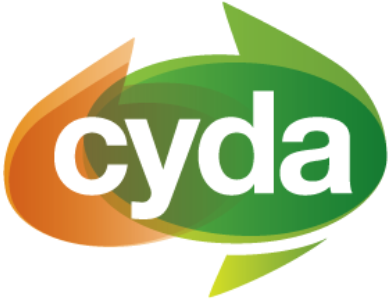The recent release of the final report of the Royal Commission into Violence, Abuse, Neglect, and Exploitation of People with Disability was a monumental milestone for Australia.
The Commission’s recommendation to phase out segregated education by the end of 2051 – just one of a whopping 222 proposals – represents a meaningful step towards a more just and equitable society for all.
While we believe this 28-year timeline is not ambitious enough, condemning another two generations of children to the current discriminatory system, we fully support its end goal.
Inclusive education is a fundamental human right recognised in Article 24 of the United Nations Convention on the Rights of Persons with Disabilities, to which Australia is a signatory.
Research shows that all students, with and without disability, experience significantly better learning, social, behavioural, and physical development outcomes when they are taught in truly inclusive settings. Where children with disability are isolated from their peers, their outcomes are notably inferior.
Despite this, the debate about ending segregated education has seen many myths and misconceptions aired that challenge the value of truly inclusive schooling. Now is the time to correct the record.
MYTH 1: Segregated schools give parents a choice
The heart of the argument in favour of segregated schooling revolves around the idea of ‘choice’. There’s a prevailing belief that phasing out special schools completely will rob students with disability and their families of options.
The truth is that this choice, as it stands, is illusory at best.
If a mainstream school is unprepared or incapable of supporting a child with disability to learn alongside their peers, then opting for a segregated setting is not genuine choice but a matter of compromise or, in some situations, coercion.
Self-segregation occasionally results from entrenched systemic biases rather than an innate preference for separation. Whether it’s the option to home-school or work in low-paying Australian Disability Enterprises, the choice is valid only when it’s born out of true preference and not forced due to systemic failures.
MYTH 2: The push to mainstream education should concern parents
The concept of ‘mainstreaming’ education can also inspire fear among parents. Here it’s important to remember that ending segregated schooling isn’t just about integration, it’s about transformation.
Inclusive education is a signpost for what we want the broader society to look like.
By allowing children with disability to learn alongside their peers in mainstream classrooms, we help build an Australia that genuinely values and embraces diversity from the earliest ages.
MYTH 3: Children are ‘better off’ in special schools
Another common misconception is that special schools provide a haven in which students with disability excel. In reality, the consequences of separation are grim.
Segregated classrooms not only lead to poorer educational and social results but often commit children to a ‘polished pathway’ that sees them shuttled from segregated schools to segregated employment in which people with disability are often paid as little as $2 per hour.
These children are not better off, but acutely disadvantaged compared to their non-disabled peers. To claim otherwise is to ignore a tragic injustice.
MYTH 4: Children can be “too disabled” for regular classrooms to handle
The idea that a child can be “too disabled” or too complex for a mainstream school to handle is simply wrong. It’s built on a cycle of misinformation and outdated beliefs about what’s best for students with disability.
Not only that, but it ignores the reality of the transformative changes that many schools have already initiated or implemented to cater to children of all abilities.
MYTH 5: Ending segregated schooling will be easy
The idea that the system can be overhauled in the span of just a few short years is unrealistic. It will require a gradual, well-thought-out response across many sectors and jurisdictions.
Supporting students with a diverse range of abilities, backgrounds and needs is what all schools and teachers need to be trained and supported to do.
In practical terms, that means teachers need much more support to do their jobs: smaller class sizes, extended planning time, in-house access to supports and expertise and a finely tuned, robust overarching support system.
Quality education and the educators that provide it are the base foundation for properly functioning and equitable societies. This fact should be reflected in sufficient investment in this space.
Going beyond closing segregated schools
The Royal Commission should be commended for its support of a gradual phasing out of segregated education, even if its six Commissioners were split down the middle about the right way forward. However, ending segregated schooling is only one piece of the puzzle.
CYDA has long been developing its own path to inclusive education in collaboration with other organisations in the disability space.
The Australian Coalition for Inclusive Education (ACIE) roadmap has set out clear goals for stakeholders, and outlined several key levers that must be addressed for Australia to be able to claim a truly inclusive educational system.
This includes:
- Preventing suspensions and expulsions
- Eliminating restrictive practices
- Stopping gatekeeping and other discrimination
- Increasing educational outcomes
- Phasing out segregated education
Government must act urgently to implement these, and other measures outlined by the Royal Commission.
Investing in training, resourcing and staffing at mainstream schools, promoting a national conversation that addresses myths and fears about ending segregation, and taking a generally collaborative approach that engages educators, policymakers, parents and – most importantly – children and young people with disability themselves, is part of this.
It is only together that we can build a world where every student, regardless of their abilities, has equal access to quality education in genuinely inclusive settings.
This is not just about eliminating special schools but transforming our entire educational paradigm to be fair and inclusive from the ground up.
Stay tuned
CYDA has only just begun working its way through the mammoth, 5000-page document that is the DRC report. We are closely reviewing every aspect that relates to children and young people with disability, including education, health and safety, and employment.
Over the coming weeks and months, we will provide you with updates, insights and proposals across all of these areas and share with you stories from young people themselves.







